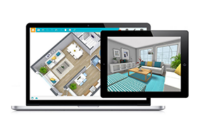
Property Surveyors, sometimes referred to as Land Surveyors, play a vital role in the real estate world. They are the professionals who determine or confirm the exact boundaries of a property.
Will you need to deal with a Property Surveyor when you sell your home?
You might.
Sometimes the mortgage lender will ask for a land survey, especially if your property is older and hasn’t changed hands in many years. You might also be asked for one by the buyer if there is any confusion about the size and boundaries of your property – or if significant changes have been made to it in recent years.
This is nothing to be concerned about.
A qualified Property Surveyor will do the appropriate inspections and measurements on your property and issue you the survey.
Property Surveyors are highly trained and licensed. The profession is represented by their respective governing bodies.
Before spending the money on a new land survey, make sure you don’t already have one. Hopefully, you’ve stored the paperwork that relates to the purchase of your home. Look through it. A valid land survey might be right there.









